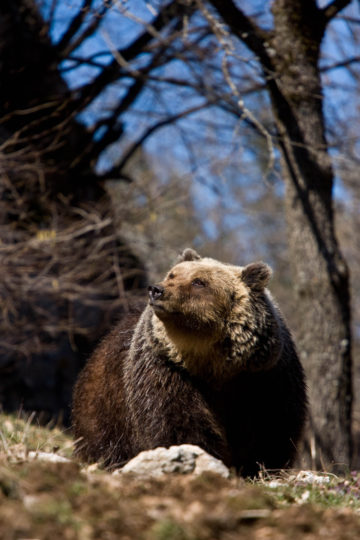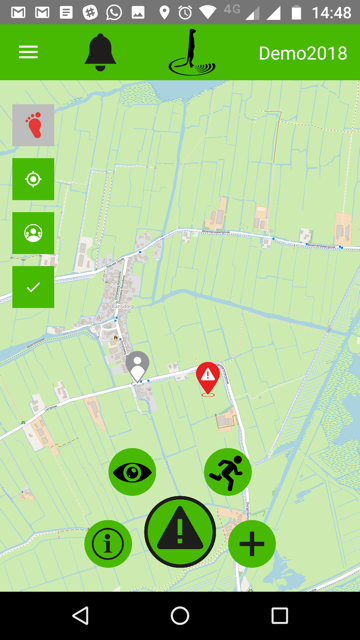The six-month collaboration with Amsterdam-based tech start-up Sensing Clues could help to mitigate human-bear conflict and improve the conservation of other wildlife species.

Predictive potential

Imagine if you could accurately predict the movements of a highly endangered animal species, hours or days in advance. For those engaged in the conservation of that species, such information would be invaluable.
A six-month tech project focused on the Central Apennines rewilding area in Italy could lead to such forecasting becoming a reality. The pilot project, which began in June, will see Amsterdam-based non-profit Sensing Clues analyse data collected from the field to determine whether there are suitable opportunities for “risk mapping”. Such a predictive system would allow the local rewilding team to conserve the area’s Marsican brown bear population more effectively, and generally be more proactive in their work on the ground.
Bear essentials

There are currently around 50 Marsican brown bears remaining in the Central Apennines. While these bears are relatively safe inside the area’s national parks and reserves (mainly the Abruzzo, Lazio and Molise National Park), outside the boundaries of these areas they are at risk from poaching, poisoning and traffic collisions.
“The outcome of this pilot project could mean that we are able to predetermine bear behaviour in a far better way,” says Rewilding Apennines team leader Mario Cipollone. “Such critical intelligence would then allow us to improve our efforts to mitigate human-bear conflict.”
Actionable intelligence
Founded in 2017, the mission of Sensing Clues is to use cutting edge technologies and expertise to transform wild spaces into safe havens. The organisation’s wildlife intelligence platform aggregates and analyses data collected from the field, providing users with an integrated, real-time reporting and early warning system.
A whole range of data related to the focus area can be fed into the platform, from camera trap and field officer sightings right through to sensor data, local meteorology and information from social media feeds. Algorithms then generate a so-called “risk map”, giving the user a clearer picture of when a conservation-related incident is likely to occur. Such incidents could be anything from poaching to an outbreak of wildfire to the movement of an animal through a wildlife corridor.
“In conservation today, boots on the ground are always scarce in comparison with the scale of the areas that need protection,” says Sensing Clues founder and director Dr. Jan-Kees Schakel. “Our system works to enhance conservation outcomes by providing timely, actionable information. Such information helps users maximise their resources and mitigate threats more effectively.”
Filling a need

Collecting, analysing and leveraging conservation-related data from the field to improve rewilding outcomes is not an easy task.
“In the Central Apennines we do generate a lot of information,” says Cipollone. “But sometimes it is stored in different places, especially because we rely heavily on volunteers. The ability to input all of this data into a single, smart, predictive system has the potential to be tremendously beneficial.”
If and when it is deployed, the Sensing Clues platform could be used to inform a wide range of conservation-related measures across the Central Apennines rewilding area.
“It’s not only bears that would benefit,” says Cipollone. “It could improve the conservation of a whole host of wildlife species.”
Should it prove successful, the collaboration between Rewilding Europe and Sensing Clues could be extended to other Rewilding Europe operational areas.
